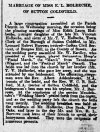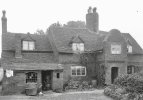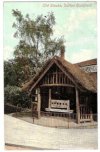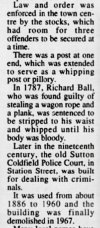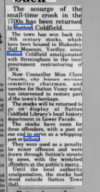-
Welcome to this forum . We are a worldwide group with a common interest in Birmingham and its history. While here, please follow a few simple rules. We ask that you respect other members, thank those who have helped you and please keep your contributions on-topic with the thread.
We do hope you enjoy your visit. BHF Admin Team
You are using an out of date browser. It may not display this or other websites correctly.
You should upgrade or use an alternative browser.
You should upgrade or use an alternative browser.
Richard Dye
master brummie
Those wooden sleepers were most likely close to 150 years old!But if you hunt around remnants of the past can still be found - wooden sleepers on the bay platform buffer stop:-
View attachment 203729
Remnants of the old trackwork still remain:-
View attachment 203731
View attachment 203733
View attachment 203737
Broken wooden sleeper on the bay platform line:-
View attachment 203735
Platform 2 & 3 buildings are wonderfully preserved:-
View attachment 203739
View attachment 203741
Metal plates on concrete platform footbridge:-
View attachment 203743
View attachment 203745
And on the roadbridge:-
View attachment 203747
Good Old OakThose wooden sleepers were most likely close to 150 years old!
poker_pete82
master brummie
Great photo! Could this be the now location? Holy trinity parish church - Coleshill street side? Obvious changes in wall height and supports missing. But entrance looks the same.Old Stocks and Whipping Post Sutton Coldfield May 1896.
creator: Sir John Benjamin Stone.
(Birmingham Archives and Collections)
View attachment 204709
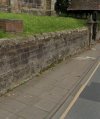
Richard Dye
master brummie
And maybe a little creosote!Good Old Oak
Richard Dye
master brummie
Oh my!Great photo! Could this be the now location? Holy trinity parish church - Coleshill street side? Obvious changes in wall height and supports missing. But entrance looks the same. View attachment 204747
Quite close to the lock-up as well
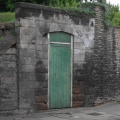
 sclhrg.org.uk
sclhrg.org.uk

Gaol Lock-up [119]
Sutton Coldfield has an interesting history well documented by a collection of primary sources housed in Sutton Coldfield Library.
Pedrocut
Master Barmmie
Thanks Lady P. Emmanuel College and Vesey School seems right.
This is from Sarah Holbeche’s diary, March 1855:
‘Carpenter Holbeche left opposite house and it became "The White Hart" (disgusting). Mr Cull became our next door neighbour.’
(https://sclhrg.org.uk/sarah-holbech...ge-45.html?highlight=WyJ3aGl0ZSIsImhhcnQiXQ==)
Carpenter Holbeche is not otherwise mentioned in her diary but it is reasonable to assume that he was a relative.
Kerry Osborne, in People and Buildings of Sutton Coldfield, vol. 3, p10 tells us that Sarah Holbeche lived on the east side of the High Street in a house that was demolished in 1878 to make way for the railway.
My suggestion would be that the 'opposite house' - which fits the location of the Hart Inn - was renamed the White Hart in 1855. Not sure why SH should find this disgusting. Perhaps just annoyed at the change of name. Her diary does not reveal any antipathy to drink or pubs.
The Diary of Sarah Holbeche does indeed provide a useful tool for research into the history of Sutton Coldfield. Just taking the year 1855 in which she mentions the White Hart.
There is a record of Hill Church under repair, and there were horse races in Sutton Park in March.
In August there was an inquiry led by Major Warburton into a petition by certain inhabitants, including a Thomas Hayward, for a charter of incorporation. She dosen't seen to like Thomas Hayward !
She records that in August Gertrude and Arthur were born. They were twins born to the wife of Vincent Holbeche.
(The Three Tuns is available for lease. Old-fashioned house with or without eight- quarter Malt house and 6.25 acres of land.)
[added later…On the 1861 census in High, Street Sutton Coldfield the Mr Cull, next door neighbour, was John H Cull boarding school master. Living with assistants, servants and at least 14 pupils.
The Holbeche house has Catherine as head with sisters Helen and Frances and 2 servants.]
Last edited:
Richard Dye
master brummie
Looks pretty old and disheveled.............This picture appears under Sutton Coldfield but No title, date, creator, subject or description is given.
(Birmingham Archives and Collections)
Anyone know where it could be ?
View attachment 204763
This talk, at p42 contains a poor quality map from 1866 showing the route of the new line and Sarah Holbeche's house. Unfortunately the Hart/White Hart is not visible.
 sclhrg.org.uk
sclhrg.org.uk
Sarah Holbeche, Talk by Janet Jordan
Sutton Coldfield has an interesting history well documented by a collection of primary sources housed in Sutton Coldfield Library.
Last edited:
Pedrocut
Master Barmmie
The Diary of Sarah Holbeche (1802-1869)
12 August 1866
“Lloyd's brothers made their appearance as occupants of Moor Hall and the pew, "specimen of Black Country gentry" Oh! for shades of The Hacketts!!!”
(She doesn’t seem to have much time for Brummies or those from the Black Country, but remembers Mr Frances Hacket with affection)
12 August 1866
“Lloyd's brothers made their appearance as occupants of Moor Hall and the pew, "specimen of Black Country gentry" Oh! for shades of The Hacketts!!!”
(She doesn’t seem to have much time for Brummies or those from the Black Country, but remembers Mr Frances Hacket with affection)
Last edited:
pjmburns
master brummie
Agree photo outside Holy Trinity ChurchOld Stocks and Whipping Post Sutton Coldfield May 1896.
creator: Sir John Benjamin Stone.
(Birmingham Archives and Collections)
View attachment 204709
From the caption "Round the Town" I suspect that these (on wheels) were not in any one place but the miscreant was put in the stocks and paraded round the town for all to see.
Maybe kept at the Court or Police station?
Just done a bit more research and the suggestion is:
Sutton Coldfield is known for its historical "stocks," public restraints used for punishment. These stocks, once located near the Kings Arms and later the Baptist Chapel, were later used as gate stoops at Bow Hill before being moved to the park following a request in 1921. The stocks are a relic of Elizabethan times when they were used to publicly humiliate offenders for misdemeanors
The Sutton Coldfield stocks are noted for having wheels, which would have allowed for the offender to be paraded through the streets while clamped in the stocks.
Last edited:
Lady Penelope
master brummie
Ornette, I emailed Kerry Osbourne who agreed with EC being Emmanuel College. All properties on the west side of Mill Street belong to the college. VSL, the land adjoining Trinity Church belonged to the grammar school.
AH must mean Andrew Hacket as the land marked AH coincides with John Snape's 1765 survey of Mr Hacket's land.
He is less sure of LH but it might be Lisle Hacket, of Moxhull Hall. He was the elder brother of Andrew Hacket senior.
Thanks to Kerry Osbourne of Sutton Coldfield Local History Research Group.
AH must mean Andrew Hacket as the land marked AH coincides with John Snape's 1765 survey of Mr Hacket's land.
He is less sure of LH but it might be Lisle Hacket, of Moxhull Hall. He was the elder brother of Andrew Hacket senior.
Thanks to Kerry Osbourne of Sutton Coldfield Local History Research Group.
Pedrocut
Master Barmmie
The park was in Sutton Craven, along with Bow Hill and the Kings Arms.
Stitcher’s postcard info could still be in Sutton Coldfield itself ?
 suttonincravenpc.org.uk
suttonincravenpc.org.uk
Stitcher’s postcard info could still be in Sutton Coldfield itself ?
History of The Stocks
They look similar to the picture on p4 of this thread. Fortunately different to those in Sutton-in-Craven.The park was in Sutton Craven, along with Bow Hill and the Kings Arms.
Stitcher’s postcard info could still be in Sutton Coldfield itself ?
History of The Stocks
suttonincravenpc.org.uk
Lady Penelope
master brummie
The stocks in Sutton Coldfield were outside what is now McDonald's which earlier had been the Baptist Church. Not sure what it was before though.
thanks pen i didnt know thatThe stocks in Sutton Coldfield were outside what is now McDonald's which earlier had been the Baptist Church. Not sure what it was before though.
lyn
Planning application 2025/01891/PA, a resubmission for the previously approved design for the Rosie OB site contains a useful heritage statement detailing the history of the site. Quite detailed. See 'associated documents', page 2.

